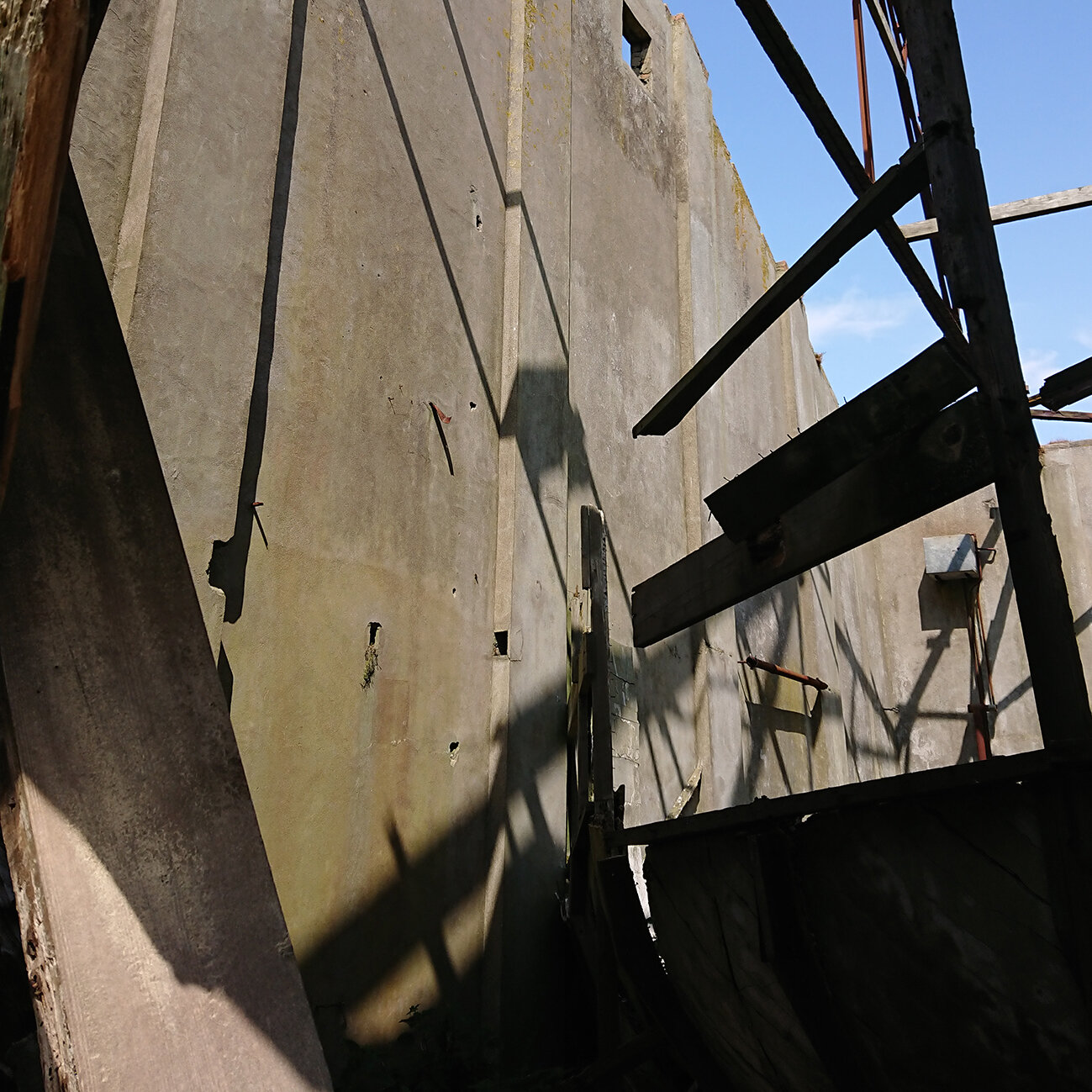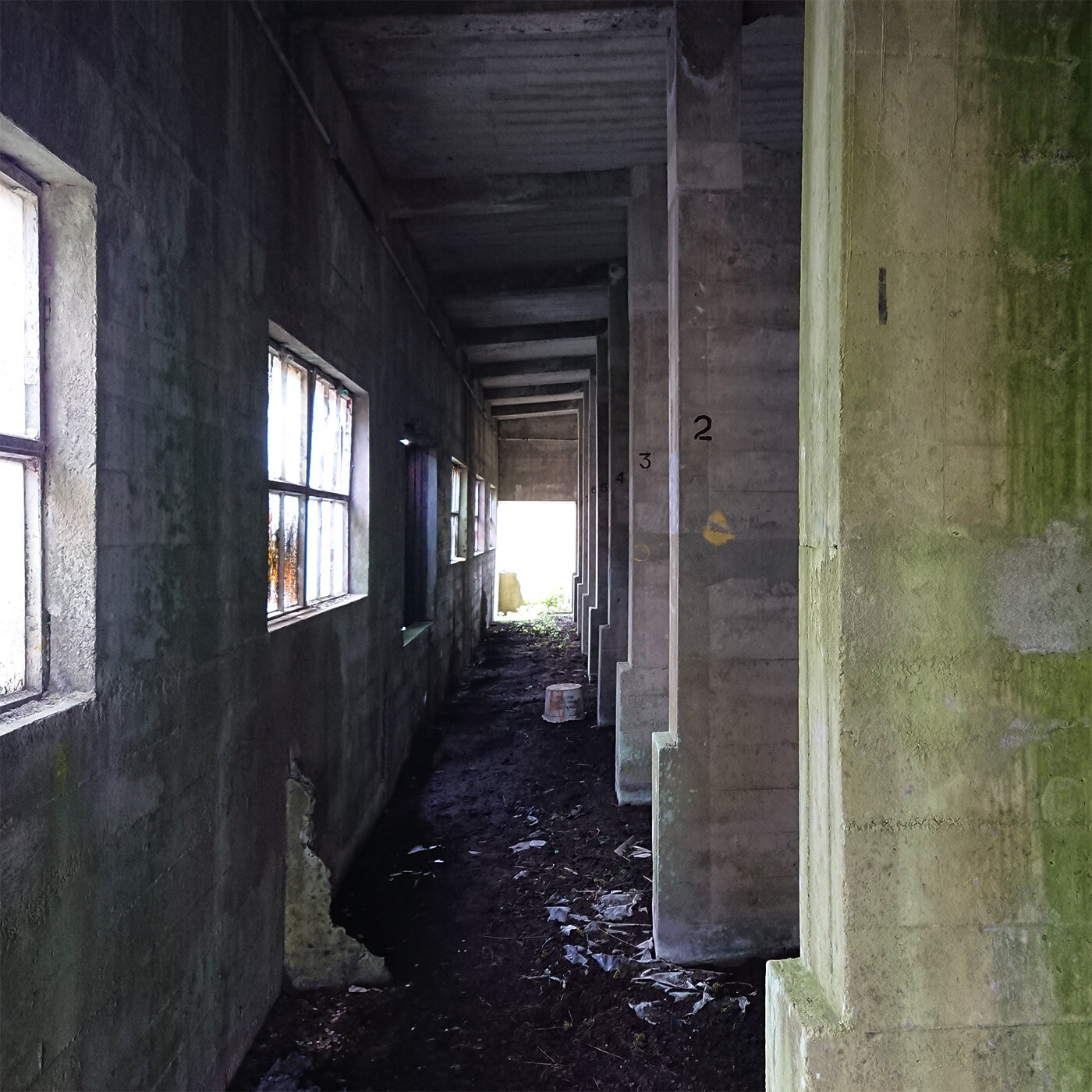Orkney Day 9 - Hoy and Lyness
RAF Hydrogen Production Plant, which supplied the 80+ barrage balloons operating over the area. Balloons had to be constantly replaced, which huge numbers swept away by strong winds.
Royal Navy Torpedo Attack Teacher. Rinnigill was home to many sophisticated training devices, with synthetic and tactical simulators, replicating weather and light conditions.
Inside the 'Cyclorama' Torpedo Attack Teacher. Remains of the concrete trainer sphere can be seen, onto which target images and atmospheric effects were projected.
Inside the 'Cyclorama' Torpedo Attack Teacher. Remains of the concrete trainer sphere can be seen, onto which target images and atmospheric effects were projected.
Dramatic shadows fall inside the decaying interior as the structure fractures. I liked the theme here of fleeting shadows and light, once artificially projected inside this building, and now created from forces of decay and celestial cycles.
This last day in Orkney was spent at Lyness on the island of Hoy. Hoy is the second largest of Orkney’s islands, and helps form the important natural harbour of Scapa Flow, used by the British Navy during both World Wars as a crucial anchorage. On the outbreak of war, defences were quickly constructed throughout the islands, but activities were concentrated in Hoy in particular. At the huge site of Lyness, and the surrounding area, for the first time since arriving in Orkney I could really start to sense the huge upheaval that war would have brought to islanders – tens of thousands of military and civilian personnel were involved in operations here. Local buildings, homes and farmland would have been requisitioned. Wild moorland was disturbed by concrete and prefabricated installations. The area became a ‘defence landscape’.
Since then, many buildings have disappeared back into the ground again, leaving scars in the earth or concrete bases that are difficult to dig out, making a strange post-human derelict landscape. Some buildings stand empty and unused, slowly succumbing to time and the weather. Others have been repurposed or assimilated into farming activities again, as ways of life returned after the conflict. Slowly decaying, the many sites across Orkney (and beyond) from the World Wars are silent monuments to 20th century global-scale conflict. It’s clear from these remains that we have the potential to create incalculable chaos and destruction, and also to fundamentally change landscapes.
Tracing ruins across Orkney and treading forgotten routes has led me to see the land in new ways, from wartime perspectives of attack and defence. I cannot revisit the past, but I can travel the marks it has left in the landscape, which has a powerful effect. Like walking a trodden path across a field, it’s as though you also follow the intentions of others who’ve passed that way before you, their activities and also their will creating a mark or construction in the landscape which then changes the flow of nature. Traversing these ruins is almost a process of acting out the past, revisiting points in time when the landscape was irrevocably altered, and so reanimating the thoughts and voices that caused those changes.
In a similar way, making images creates a change or tear in the flow of time and nature. Not only the subject, but the viewer’s perspective and will is captured when an image is made, allowing those thoughts and intentions to transcend time – like following a pathway in someone’s mind.
Viewpoints are powerful, describing not only what we see, but what we wish to affect – a projection into the outside world from the standpoint of a particular intention or potential action. My own viewpoint is very different at this point in time. With a camera in my hand and countless images from the past in my mind, I look at the landscape from a modern-day perspective where technology frames our engagement with landscape. I think perhaps global war was really the start of this. For the first time advances in technological power on sea, land and air, and beyond-the-visual communication technologies, led to conflict across oceans and continents, breaking previous notions of time, distance and landscape.
Speaking to a local farmer whose land was scattered with the remains of wartime buildings for hydrogen production and military training, it was interesting to hear about his wishes to preserve buildings or turn them into something new – before natural decay destroyed them completely. As well as framing our engagement with nature, technologies have altered our interaction with the past; in such a forward-driving modern era, it’s strange that today the past is so present through images, film and recordings. We now assimilate the past into our present in new ways. But it’s important to not only live through images, but also physically follow pathways through the landscape, to really sense passing time and the land as a living changing presence, not simply something to onto which we build constructs.
*Information from ‘Wartime Orkney Leaflet, No 1 and 2’, Orkney Islands Council.
The Royal Electrical & Mechanical Engineers (REME) Vehicle Workshop. One of the few remains in this area, which was extensively covered with buildings during wartime.
A shadowy entrance at the Equipment Ammunition Magazine nearby, the main one for the Army's anti-aircraft guns on Hoy and Walls.
Inside a concrete magazine building. The numbered bays can still be seen, where crates of ammunition were stored after arriving by ship at Lyness. From here, ammunition would be taken to smaller magazines located at gun batteries across the island.
Wee Fea Hill is dominated by a large concrete building, visible from all around Lyness. This was the main Naval Headquarters and Communications Centre, which was operated largely by WRNS, handling calls and messages from the outside world to the Naval Base and the Fleet via telephone and radio link.
Large cracks appear across this imposing building, and a large part on the outside has collapsed .
The whole site is a dangerous and sinister presence on the otherwise deserted hill. The heather-covered landscape stretches into the distance, eerily quiet when once this site was the crossing point of thousands of voices and messages every day.
The remains of the Lyness Royal Navy base are scattered below Wee Fea. The base was at the heart of Scapa Flow, a huge natural anchorage and base for the Home Fleet during WWII - a place from which to control the North Sea and North Atlantic.
Nearby accommodation buildings where Women's Royal Navy Service (WRNS) stayed. The buildings are surrounded by trees, quiet and secluded.
#Orkney #Ruins #WarRuins #Decay
This project was supported by a-n The Artists Information Company. Find out more at a-n.co.uk.












